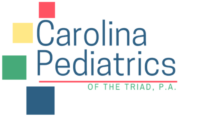Parent Resources
Use of Psychostimulant Medication: Tips for Teens—ADHD Toolkit
View spanish version, share, or print this article.
The Facts
-
Stimulant medications are defined as controlled substances under federal and state regulations. The possession of stimulant medication without a prescription is against the law.
-
Money does not need to be exchanged for a gift or another exchange of a controlled substance to be considered a “sale.”
-
Appropriate treatment of ADHD does not increase the risk of engaging in substance use.
Protect the Medication You Need
-
If you are caught giving just one pill away,
even without getting any money for it , you are dealing. It is illegal and you will get into serious trouble with your parents, your school, and even the police. -
Don’t tell your friends you are taking this medication; if your friends don’t know about it, they won’t ask or try to pressure you for any.
-
Be careful with your medication in locker rooms and bathrooms. Don’t leave a bag containing your medication sitting on the sink in the bathroom.
-
Keep your medication in a safe place. Don’t leave it out on your dresser or in your desk, where people can steal it.
-
Never lend your medication to other kids. Just say, “Sorry, my doctor is strict about this and won’t give me any extra if I run out too soon. I can’t even give you one pill. You should ask your own doctor if you think you need it.”
-
If you carry your pills with you, always keep them in the properly labeled prescription bottle.
When Looking for a Job
-
If you are on medication and going for a job interview, you should privately tell the interviewer right away that you take prescription medication that might show up on a drug test. If the medication shows up on a test and you haven’t told the employer or if you try to tell the employer at the time of the test, the employer is not likely to accept the information and it can cost you the job.
-
State and federal laws prevent employers from discriminating against someone taking prescription medication, so you should not be afraid to tell the truth.
-
You should also seek a note from your doctor supporting this.
The recommendations in this resource do not indicate an exclusive course of treatment or serve as a standard of medical care. Variations, taking into account individual circumstances, may be appropriate. Original resource included as part of
Inclusion in this resource does not imply an endorsement by the American Academy of Pediatrics (AAP). The AAP is not responsible for the content of the resources mentioned in this resource. Website addresses are as current as possible but may change at any time.
The American Academy of Pediatrics (AAP) does not review or endorse any modifications made to this resource and in no event shall the AAP be liable for any such changes.
Powered by RemedyConnect
disclaimer
Denver Data Feed


